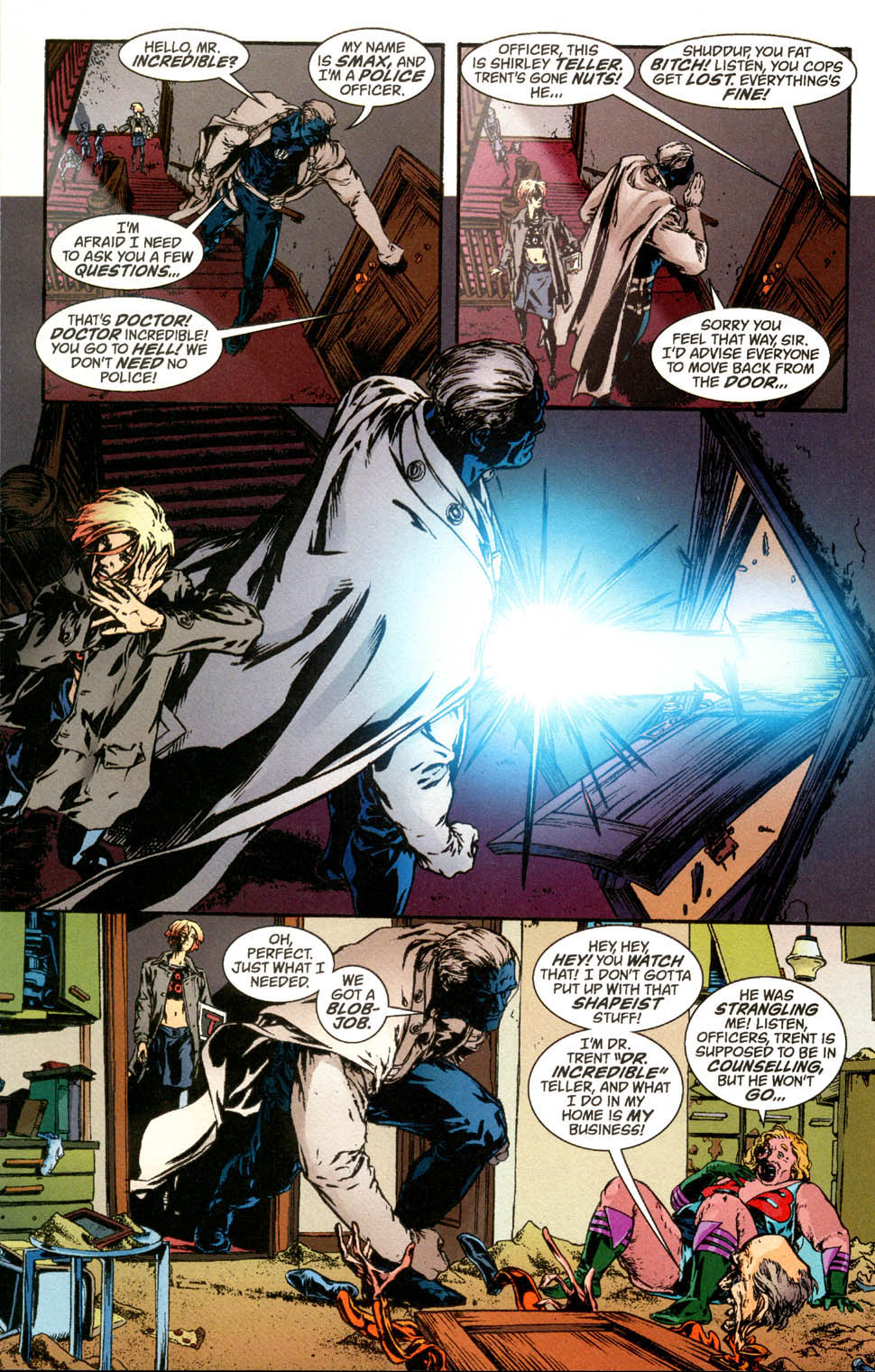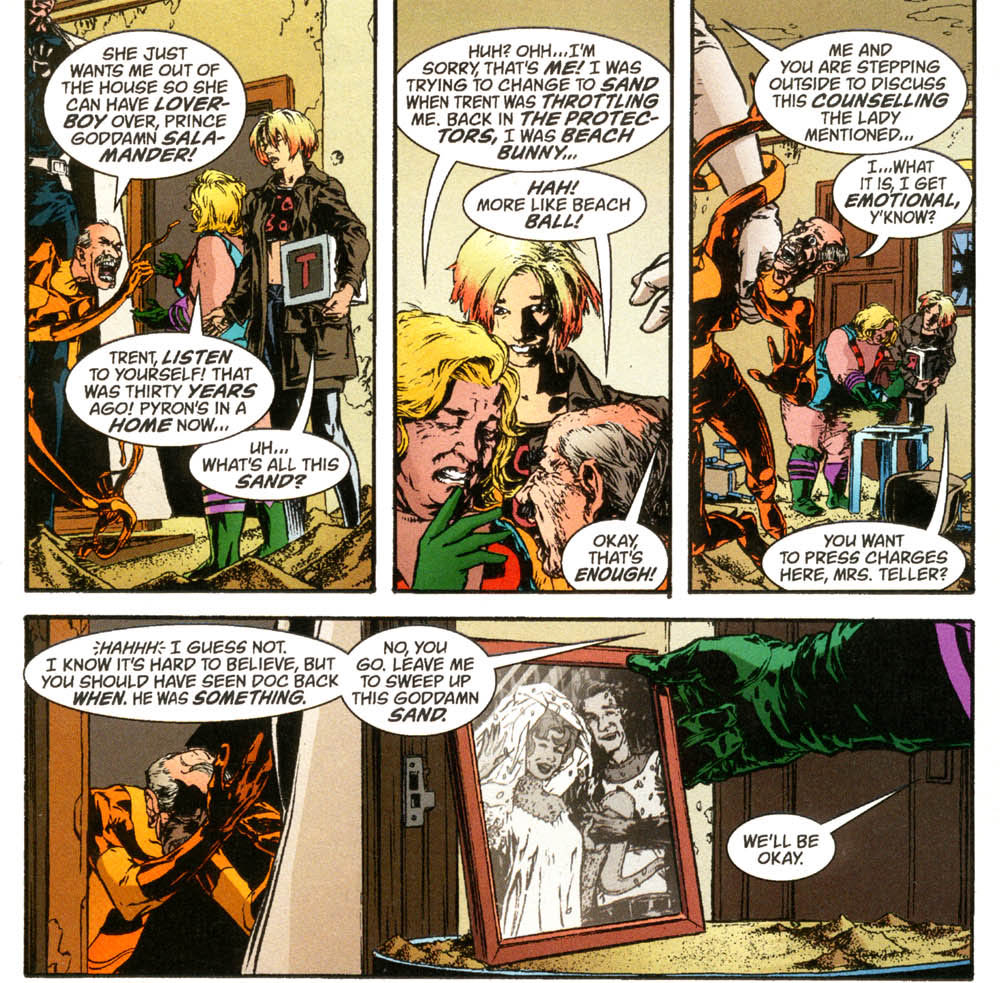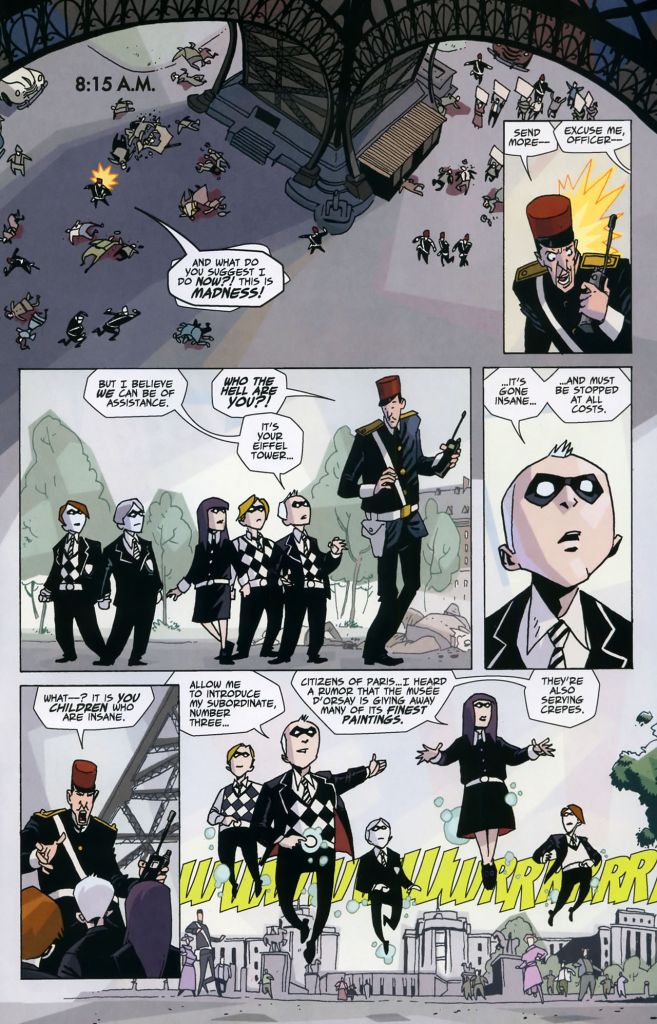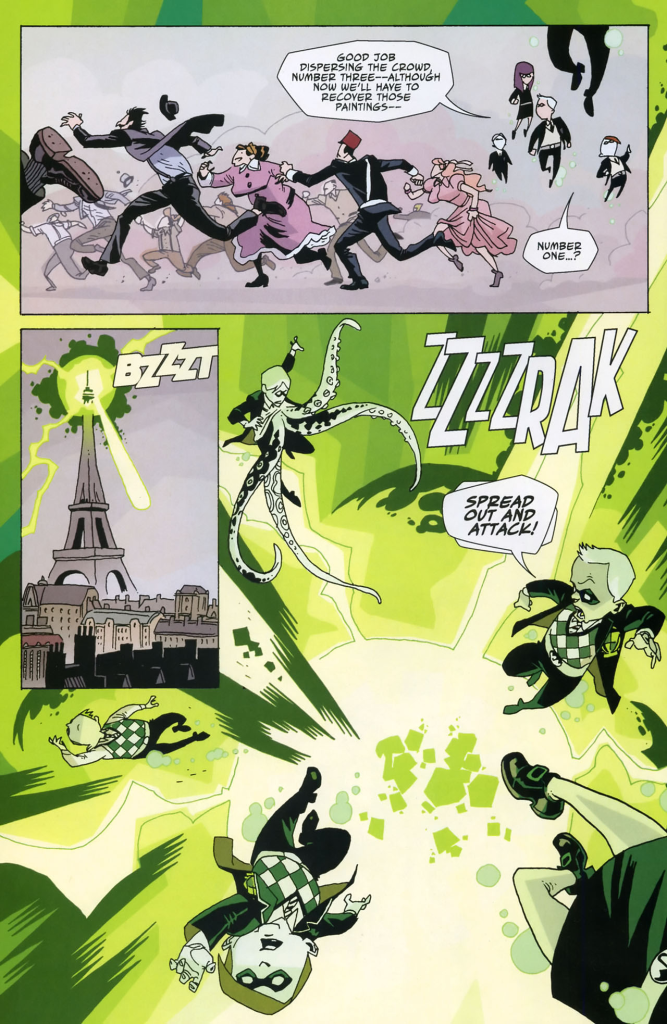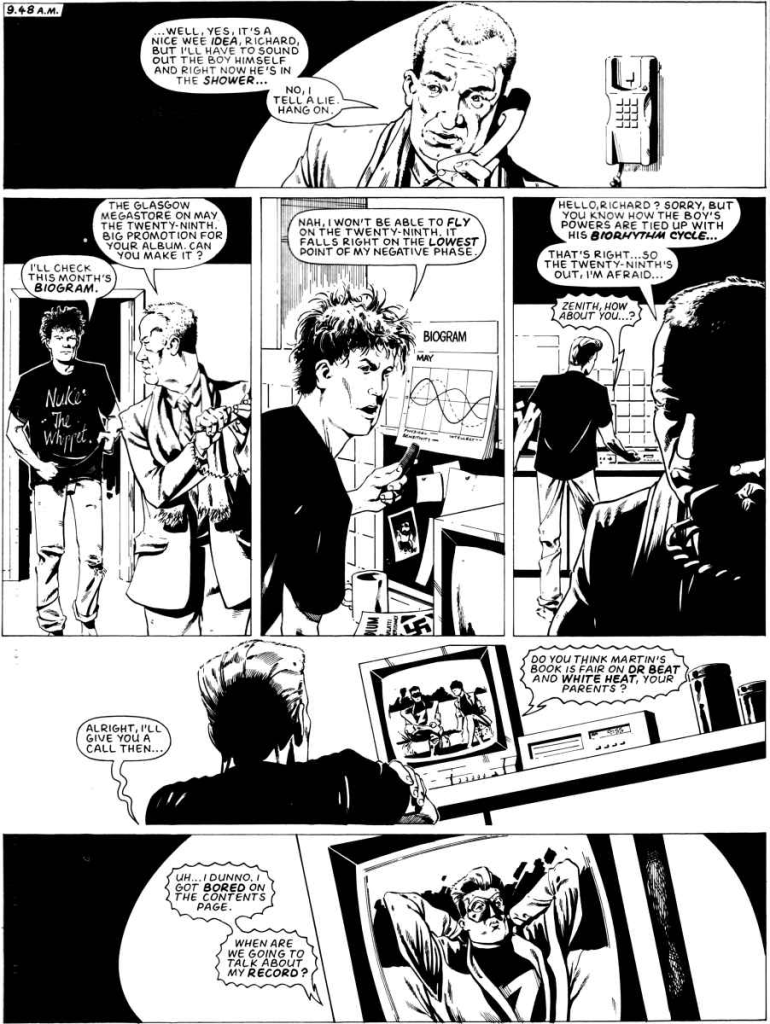If you read the last post, you know what’s going on. Here are another five brilliant, accessible superhero comics:
The One
In the mid-80s, with Reagan still churning out his initial rhetoric of Cold War escalation, and just before Watchmen and The Dark Knight Returns channeled the widespread feeling of impending doom into the world of superheroes, Rick Veitch unleashed his own twisted take on the Zeitgeist.
When an old, decrepit version of Richie Rich manipulates the USA and the Soviet Union into the ultimate confrontation, the two countries enter a bizarre superhero arms race, spawning physically and mentally deformed ‘superiors.’ Meanwhile, humanity’s fears of nuclear holocaust take the form of mystic creatures fighting for our collective consciousness. More interested in superpowers than heroism, The One takes the basic concepts and aesthetics of the genre and uses them to tell a heady, maximalist, fucked up story of war, politics, lust, spiritual evolution, and a giant mouse called Übermaus! The result feels both rooted in a specific era and years ahead of its time, especially as many of these ideas have since then been reworked to death by other creators.
Influenced by New Age mysticism and counterculture, Rick Veitch’s comics usually combine despicable characters, pitch black satire, and seriously creepy imagery. The One is no exception, with Veitch’s freaky art depicting the grotesque cast and environment in all their seediness. And yet, this isn’t even his most cruel and iconoclastic attack on superheroes – that would be either the metafictional masterpiece The Maximortal, which examines the destructive power of the concept of Superman in the 20th century, or the disturbing Brat Pack, which mocks the fascist and fetishistic role of sidekicks in superhero fiction.
Top 10
Imagine being a cop in a city where everybody has superpowers. Literally, everybody: kids, bartenders, telephone operators, prostitutes, and cab drivers. Oh OK, throw in a bunch of robots and monsters as well, for good measure. This is the setting of Top 10, a hilarious police procedural that borrows all the clichés from shows like Hill Street Blues and Law & Order and turns them into absurdist jokes, including an infestation of supermice and a murder in a bar full of gods (‘We’re police officers. Nobody move in a mysterious way…’).
Leave it to Alan Moore to take things farther than anyone else. Not only does he pack Top 10 with an insane amount of nods and gags (artist extraordinaire Gene Ha had to bring in Zander Cannon to help him fill in all the endless details the script asked for in each panel), but Moore gives a distinctly engaging voice to each member of the comic’s very wide and very diverse cast. In the end, somehow a deeper meaning emerges from the barrage of sick jokes and meta-puns, as Top 10 turns out to be a surprisingly touching celebration of diversity.
It’s such a fascinating high concept that it begs for more stories. Moore himself wrote a spinoff (Smax) and a prequel (The Forty-Niners) – and while Paul Di Filippo’s sequel wasn’t very good (Beyond the Farthest Precinct), Zander and Kevin Cannon did a great job with their own take on the series (Top 10: Season Two).
The Umbrella Academy
The first page of The Umbrella Academy features a wrestler in mid-jump, about to land on a comically bug-eyed, tentacled monster spread on a wrestling ring. The captions read:
‘It was the same year “Tusslin’ Tom” Gurney knocked out the space-squid from Rigel X-9…
It happened at 9:38 p.m….
It came from an atomic flying elbow.’
Although unrelated to the actual plot, that page tells you all you need to know about this comic: it’s funny, surreal, and shamelessly action-packed. In fact, there is something cool in every single page of this series about a dysfunctional family of superheroes facing the most hallucinating threats you can think of (yes, including a society of homicidal musicians called Orchestra Verdammten). With a childlike sense of excitement and taste for graphic violence, The Umbrella Academy is superhero comics at their most enjoyably preposterous!
Rock star Gerard Way hit the ground running with this series, creating an eccentric world worthy of Jean-Pierre Jeunet and filling it with explosive ideas no matter how much sense they may or may not make (if you can accept zombie-robot Gustave Eiffel, you can also accept that in this universe the USA was openly fighting in Vietnam during the Kennedy administration, just for the hell of it). The cartoonish and breathtakingly dynamic art is by Gabriel Bá, with colors by the reliably awesome Dave Stewart.
The Winter Men
Revolving as it does around a team of former Soviet super-soldiers, at first The Winter Men may sound like just another entry into the expanding subgenre of Cold War-related superhero comics (Superman: Red Son, The New Frontier, The Programme, The American Way, The Boys, Divinity, etc). However, this aspect is kept low-key in what is for the most part a dense crime story that also borrows elements from espionage and science fiction. Behind all the genre-bending, and above all, The Winter Men is an original and challenging exploration of early 21st century Russia.
Brett Lewis and John Paul Leon have really crafted something special. The dialogue is written in sardonic broken English and peppered up with literal translations of Russian expressions (although some of the Russian text is actually screwed up, for example mixing у with ч). Rich characterization emerges from witty interactions as well as from small gestures in the corner of the detailed and atmospheric panels. The plot is intricate, but this is a comic that is not afraid to take digressions, whether it’s a violent trip to Brooklyn, an amusing Christmas party, or the moody interlude in chapter 4, which follows a couple of characters around Moscow during an eventful day with little connection to the main story.
Gripping, smart, brutal, and moving, The Winter Men is easily one of the best comics of the last decade.
Zenith
Interdimensional monsters want to destroy the world by possessing a Nazi superhuman and apparently the only one who can stop them is a spoiled, self-centered British pop star (with help from a feisty magazine editor, a drunken Welsh, and a hippie turned Tory MP). Well, that’s how everything starts anyway…
Written at a time when Grant Morrison was still trying to subvert superhero conventions (Animal Man, Arkham Asylum) rather than embracing them (most of his stuff since JLA), Zenith treats its protagonist as a cynical pop icon and replaces some of the obligatory slugfests with clever, anti-climactic twists. These last 30 years may have taken the edge off this then-revolutionary satire, but the series still holds well as an entertaining read thanks to Morrison’s wit and Steve Yeowell’s elegant pencils.
All in all, Zenith remains a cool comic that keeps pulling the rug from under the reader until the knockout final act, in Phase IV.
NEXT: Batman vs dinosaurs.


